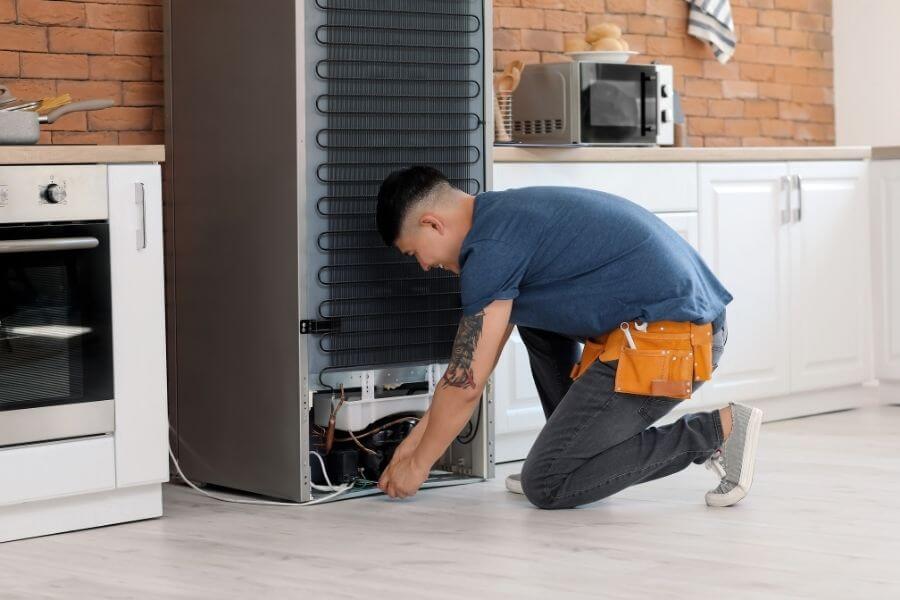It’s always unsettling to walk into your kitchen and discover a mysterious puddle forming around your refrigerator. A leaking fridge isn’t just a nuisance—it could be a sign of a minor issue or the start of something more serious. The good news? Most causes of refrigerator leaks are common, easy to spot, and fixable without a professional (at least, most of the time). Let’s break down the top 10 reasons your fridge might be dripping water, plus practical steps to solve each one.
1. Clogged or Frozen Defrost Drain
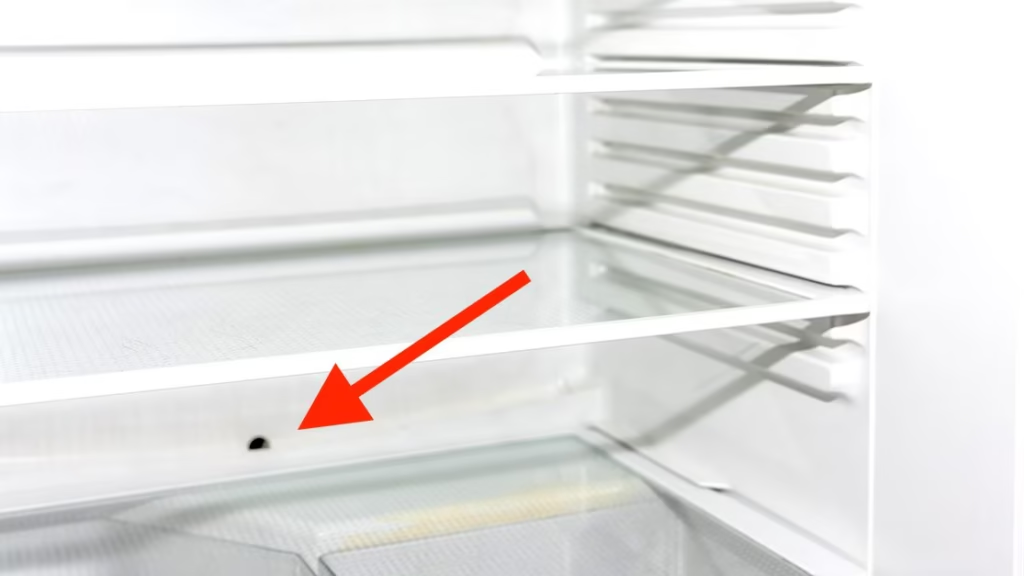
What’s Happening?
Your refrigerator regularly defrosts itself, and the water from this process drains through a small hole at the back. If this drain gets blocked by debris or freezes over, water will collect at the bottom and eventually escape onto your kitchen floor.
How to Fix It
- Unplug the fridge.
- Locate the defrost drain hole (usually at the back wall, inside the fridge).
- Use warm water to flush out the drain, or a pipe cleaner to dislodge debris.
- For persistent blockages, a turkey baster works wonders for forcing water through.
Quick Tip
Pour a little baking soda mixed with water down the drain every few months to prevent future clogs.
2. Damaged or Misaligned Door Gasket
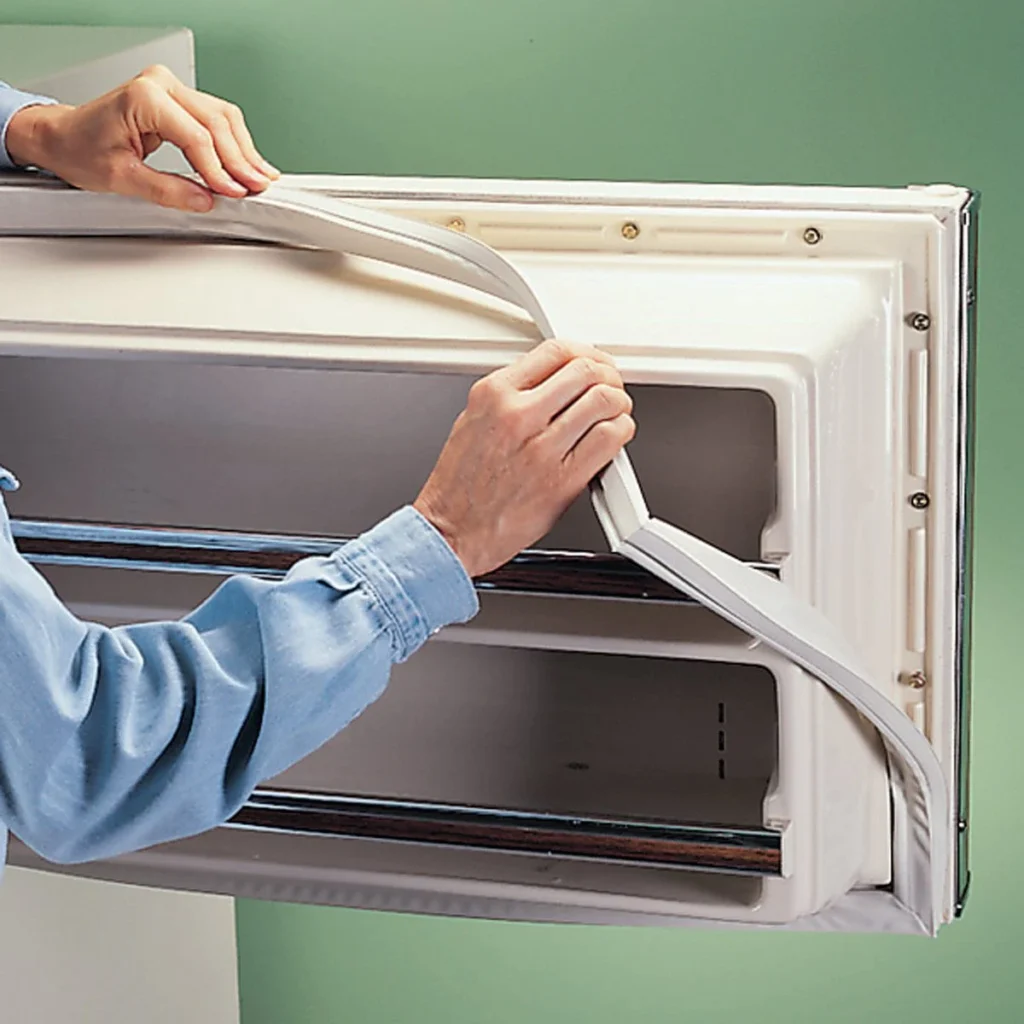
Why It Matters
The rubber seal around your refrigerator door (the gasket) is essential for keeping cold air in and warm air (and moisture) out. If it’s torn, dirty, or loose, warm air can sneak in and cause condensation—which leads to pooling water.
How to Fix It
- Inspect the gasket for cracks or mold.
- Clean it with soapy water and a soft cloth.
- If it’s damaged, replacing the gasket is usually simple and affordable.
Insider’s Note
A dollar bill test can reveal leaks: close the door on a bill and try to pull it out. If it slips easily, your seal isn’t tight enough.
3. Blocked or Leaking Water Supply Line
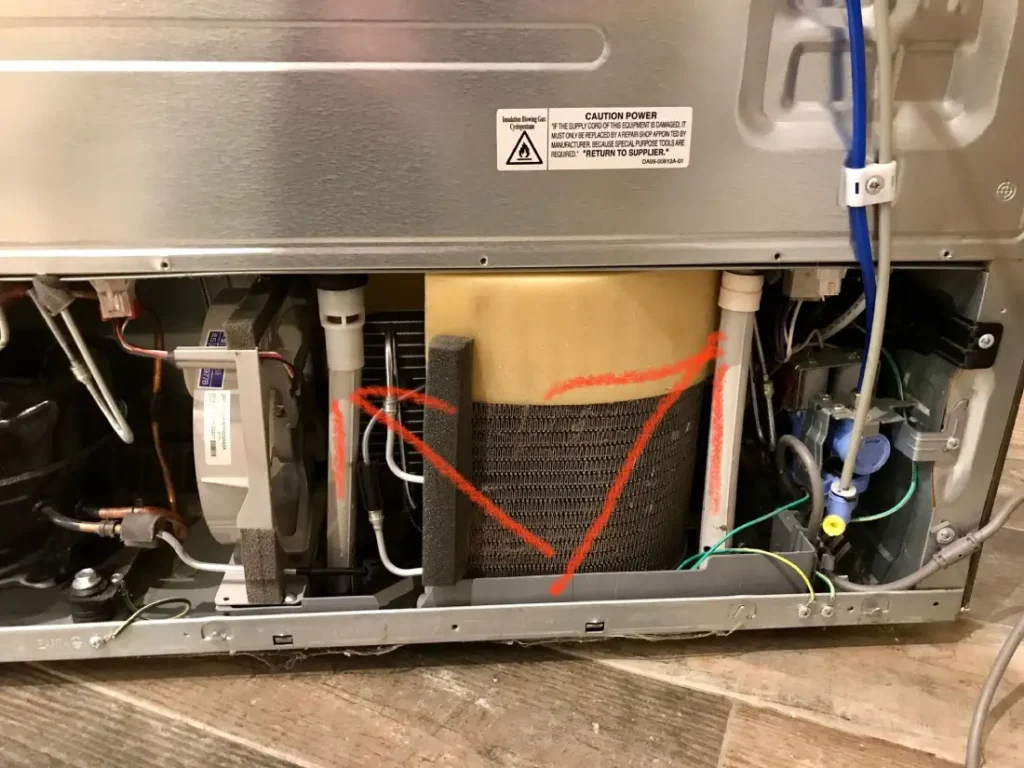
What’s Going On?
If your refrigerator features a water dispenser or ice maker, a supply line connects it to your plumbing. These lines can get clogged, kinked, or cracked, allowing water to leak behind or beneath your fridge.
How to Fix It
- Pull out the fridge (carefully!) and check the water line for any visible leaks.
- Tighten any loose connections or replace damaged tubing.
- If the line is clogged with mineral deposits, replacing it is usually best.
Pro Tip
Always turn off your home’s water supply before working on the supply line to avoid a bigger mess.
4. Improperly Leveled Refrigerator
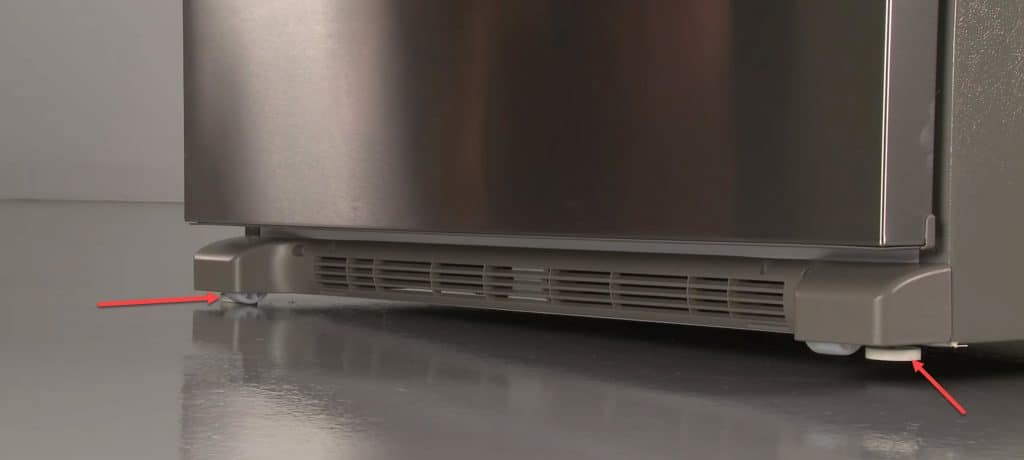
Believe It or Not
If your fridge isn’t level, water from the defrost cycle may not drain correctly, causing puddles to form inside or outside.
How to Fix It
- Place a bubble level on top of your fridge.
- Adjust the feet or wheels as needed until the fridge is perfectly level from side to side and slightly tilted back.
Why the Slight Tilt?
A slight backward tilt helps the door close automatically and assists water drainage.
5. Full or Cracked Drain Pan
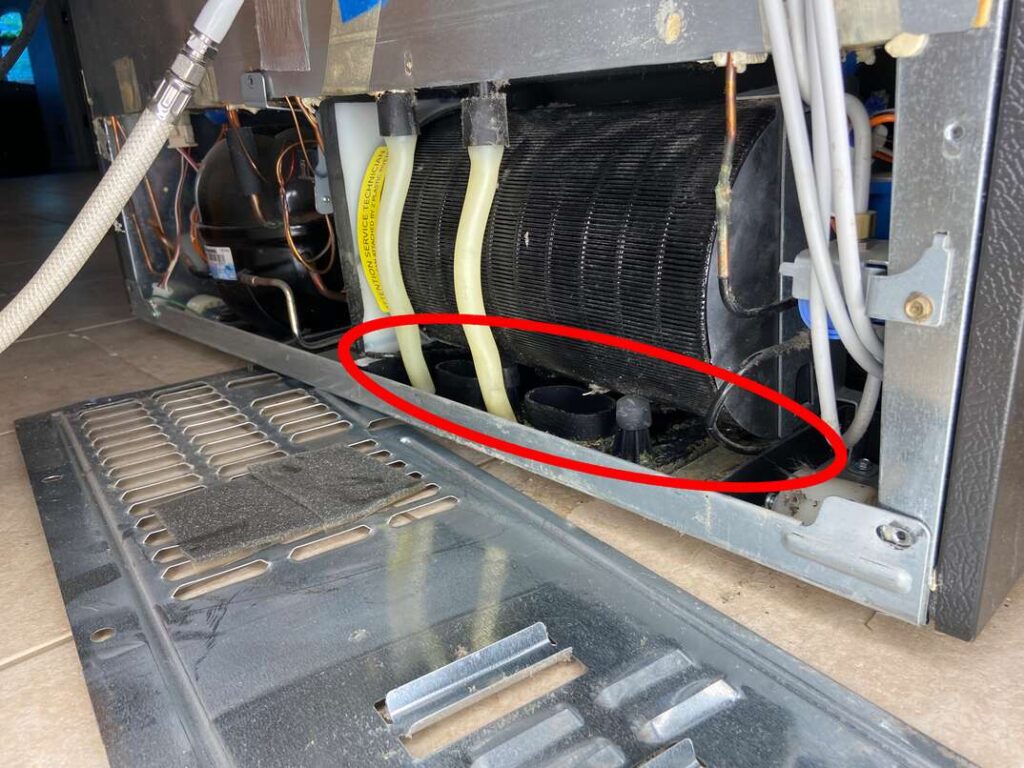
The Drain Pan’s Role
Beneath every fridge, there’s a small drain pan that catches condensation and defrost water. Over time, the pan can crack, overflow, or become misaligned.
How to Fix It
- Unplug the fridge and carefully pull it away from the wall.
- Remove and inspect the drain pan.
- Clean or replace the pan if necessary, and make sure it sits properly in place.
6. Overfilled or Damaged Ice Maker
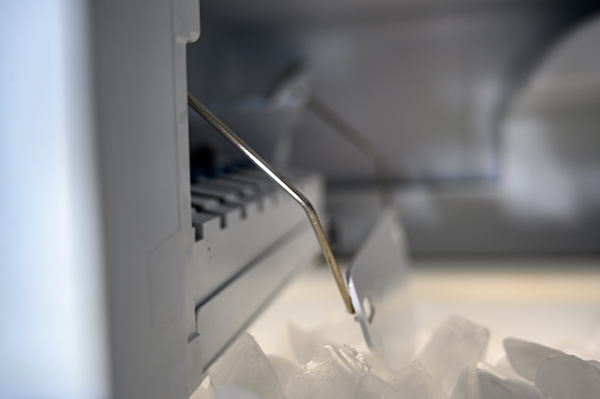
When the Ice Maker Is to Blame
An ice maker that’s making too much ice, or has a broken part, can cause leaks inside your freezer—and onto your kitchen floor.
How to Fix It
- Check the ice maker for jammed cubes or a stuck fill arm.
- Adjust the fill level if possible, or consult your manual for a reset procedure.
- If you spot a crack or malfunction, replacement is sometimes the only option.
7. Defective Water Filter
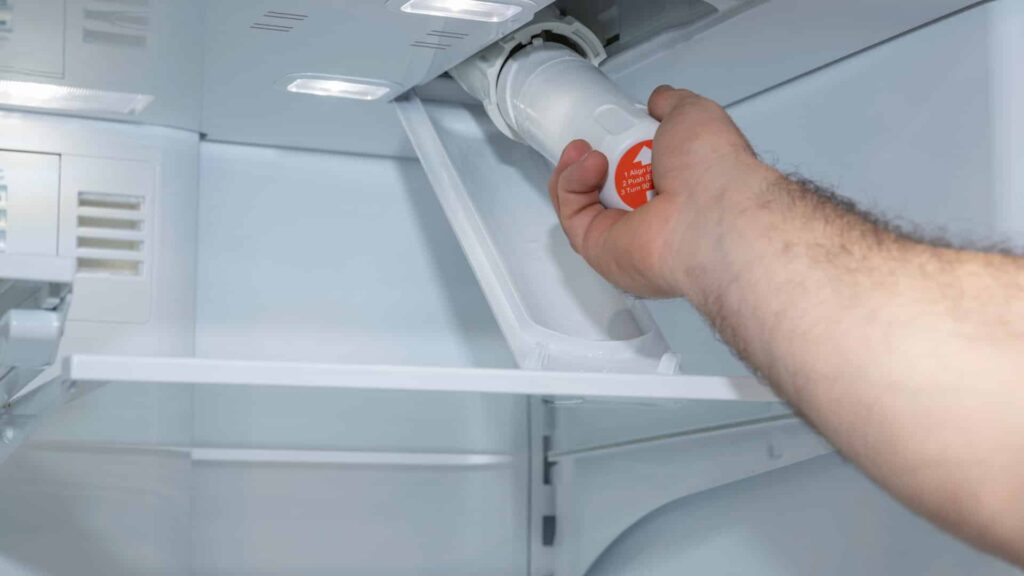
The Hidden Culprit
A water filter that’s not seated properly or has a damaged O-ring can allow water to escape.
How to Fix It
- Remove and inspect the water filter.
- Reseat it or replace if needed, making sure it “clicks” securely into place.
- Check the manufacturer’s recommendations for filter replacement intervals.
8. High Humidity or Room Temperature
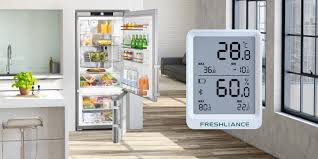
Sometimes, It’s Just the Weather
On very humid days, condensation can build up faster than usual, especially if your fridge door is opened frequently.
What You Can Do
- Try to keep door openings brief.
- Use the fridge’s humidity control settings, if available.
- Make sure your kitchen is well-ventilated, especially during muggy summer months.
9. Food Blocking Air Vents
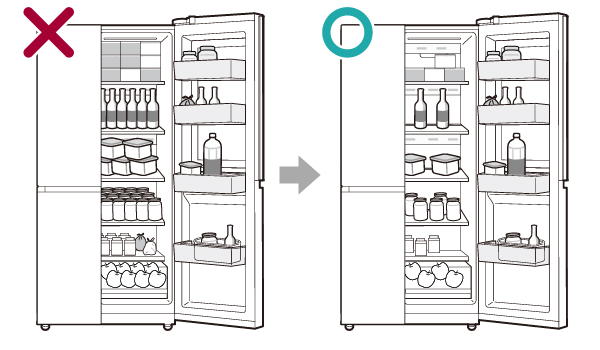
A Simple Mistake
Overpacking your fridge or placing items too close to the back wall can block airflow, causing ice buildup and water leaks.
How to Fix It
- Organize your food to allow for air circulation, especially around vents.
- Avoid stacking items too high or deep.
10. Old Age or Faulty Components
When to Call for Backup
Sometimes, leaks are a sign of aging parts or more complex failures (like a cracked liner or faulty defrost timer). If you’ve checked all the common issues and your fridge is still leaking, it might be time for a professional assessment—or even an upgrade.
Signs You Need a Pro
- Persistent leaks after all DIY fixes.
- Loud, strange noises or erratic cooling.
- Fridge is more than 10-15 years old and repairs are adding up.
In Conclusion: Don’t Ignore the Drips
A leaking refrigerator can seem like just a minor annoyance, but it’s often your appliance’s way of waving a red flag. Fortunately, most leaks are caused by common, fixable issues—many of which you can handle yourself with a little patience and a screwdriver.

